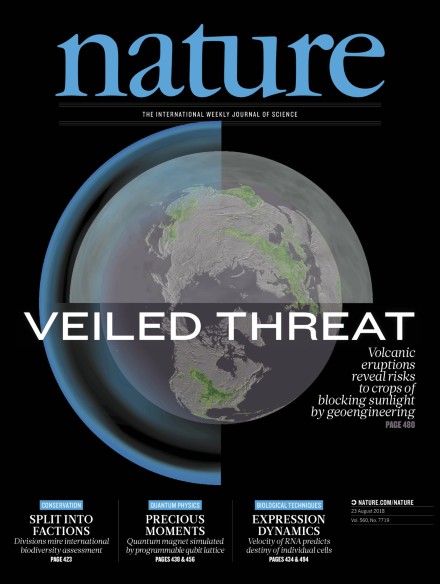Volume 560 Issue 7719, 23 August 2018
This Week
-
Editorial
-
-
World View
-
Research Highlights
-
Seven Days
News in Focus
-
News
-
Features
Comment
-
Comment
-
Books and Arts
-
Correspondence
-
Obituary
Technology
-
Toolbox
-
Software training in Antarctica
Collection:
-
-
Technology Feature
Careers
-
Features
-
Q&A
-
Depression tracker
Career Guide:
-
Futures
Research
-
News & Views
-
Articles
-
Letters
-
RNA velocity of single cells
Milestone:

